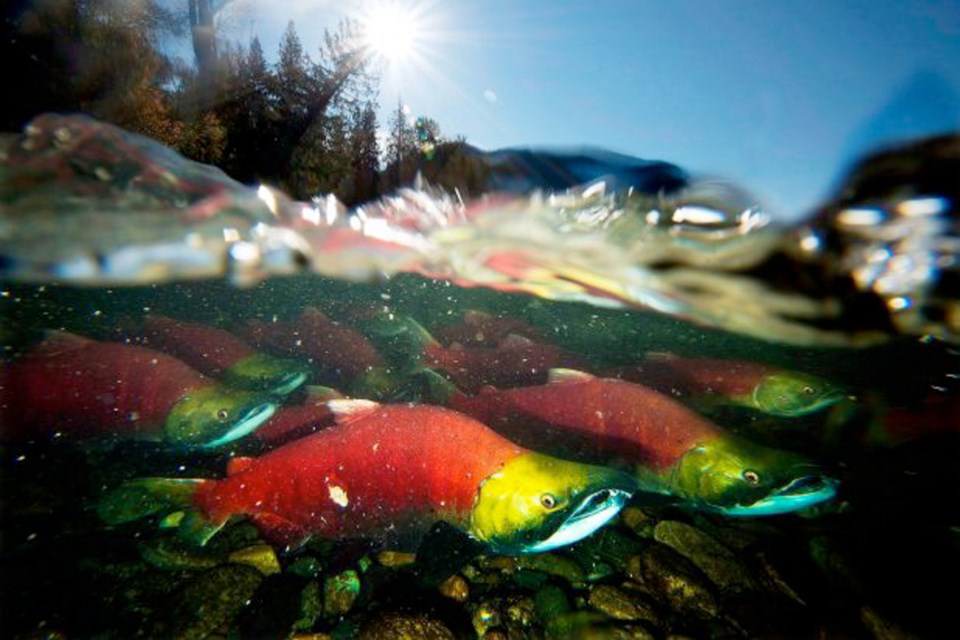Nations around the Pacific Ocean may have to cap the number of hatchery salmon they release if sockeye salmon runs are to return to sustainable levels, according to a new study.
Record high numbers of pink salmon in the North Pacific coincided with the disastrously small 2009 Fraser River sockeye return, while the unexpectedly large 2010 sockeye return interacted with 40-per-cent fewer pinks, said Brendan Connors, co-author of the article published by the Canadian Journal of Fisheries and Aquatic Sciences.
The findings have implications for fisheries management and hatchery programs in Russia and Alaska that produce most of the five billion hatchery fish released into the Pacific each year.
“ ... Even though overall abundance of wild pink salmon has been exceptionally high during the past 30 years, hatchery operators have proposed substantial increases in hatchery pink salmon in Prince William Sound, Kodiak, Yakutat, Southeast Alaska, and Russia,” the authors write.
But there has been little cooperation between nations about the release of hatchery salmon, even in the face of evidence that large-scale hatchery programs can have far-reaching effects, according to fisheries scientist Randall Peterman, a professor emeritus at SFU.
“Getting an international agreement on who should get how much of the ocean’s carrying capacity for salmon is a major policy stumbling block, despite what is clear in the scientific realm,” he said.
According to the new research, food competition between pinks and sockeye has led to slower growth, delayed maturation and spawning, and lower survival rates for B.C.’s iconic fish.
Sockeye that mature later may return to freshwater and spawn successfully, but spending an extra year at sea means they have a better chance of being eaten by predators, said Connors, an ecologist and adjunct professor at Simon Fraser University.
“We also find that the sockeye are smaller when they are in competition and that reduces the number of eggs produced by females,” he said.
Observed increases in the number of pinks were predicted to reduce Fraser sockeye abundance by 67 per cent, Connors said.
The four leading hypotheses presented to the Cohen Commission convened to explain the decline of the Fraser River sockeye were: climate-related changes to ocean conditions, allowing too many fish onto spawning grounds, salmon aquaculture and interactions with pink salmon.
“When we looked at all four of these things together around the time of the commission, the one that had the strongest support was the competition with pink salmon,” he said. “And in years when sockeye salmon migrated past a large number of salmon farms that negative relationship was even stronger.”
Peak pink abundance — fuelled in part by the annual release of up to 1.4 billion hatchery pinks — is linked to the decline of 36 of 38 sockeye populations from Washington State to Alaska, according to Connors. Pink salmon eat many of the same foods as sockeye, especially squid and plankton, and are known to be more flexible and opportunistic about their diet than sockeye. By switching prey, the pinks may be changing the entire food web and reducing the abundance of the sockeye’s favourite foods.
Because populations of pink salmon peak every second year — in odd years on the south coast — the effect of their abundance on other fish and other sea creatures is relatively easy to observe, said Connors, who penned the study with Seattle-based fishery scientist Greg Ruggerone.
Past research has linked pink abundance to declines in Bristol Bay sockeye, chinook salmon released in Puget Sound and even seabirds such as kittiwakes and puffins in Alaska.
“We are at a point when it makes sense to have a conversation about hatchery programs while conditions in the Pacific Ocean are fairly favourable, especially in the north,” Connors said. “If that changes we could suddenly have a whole lot of fish competing for even fewer resources.”



